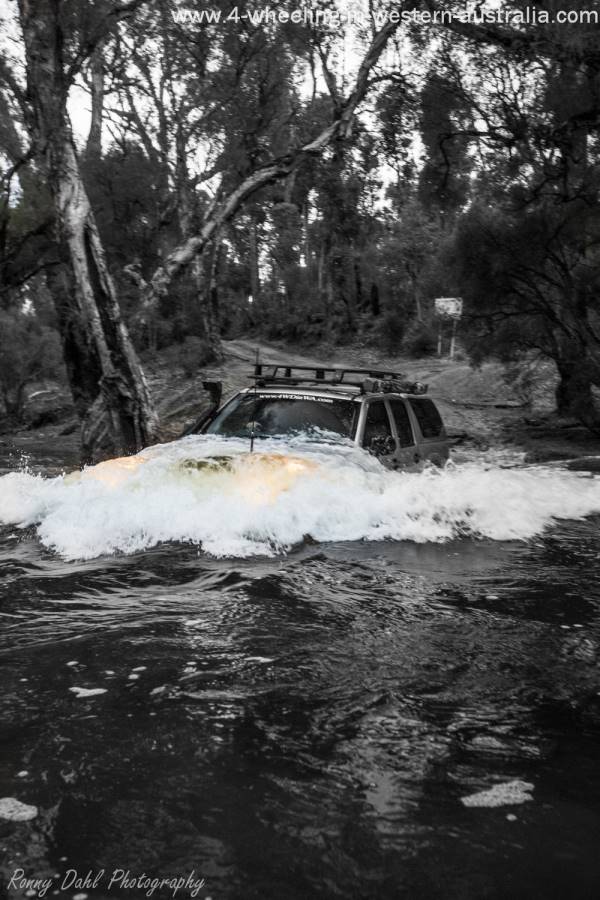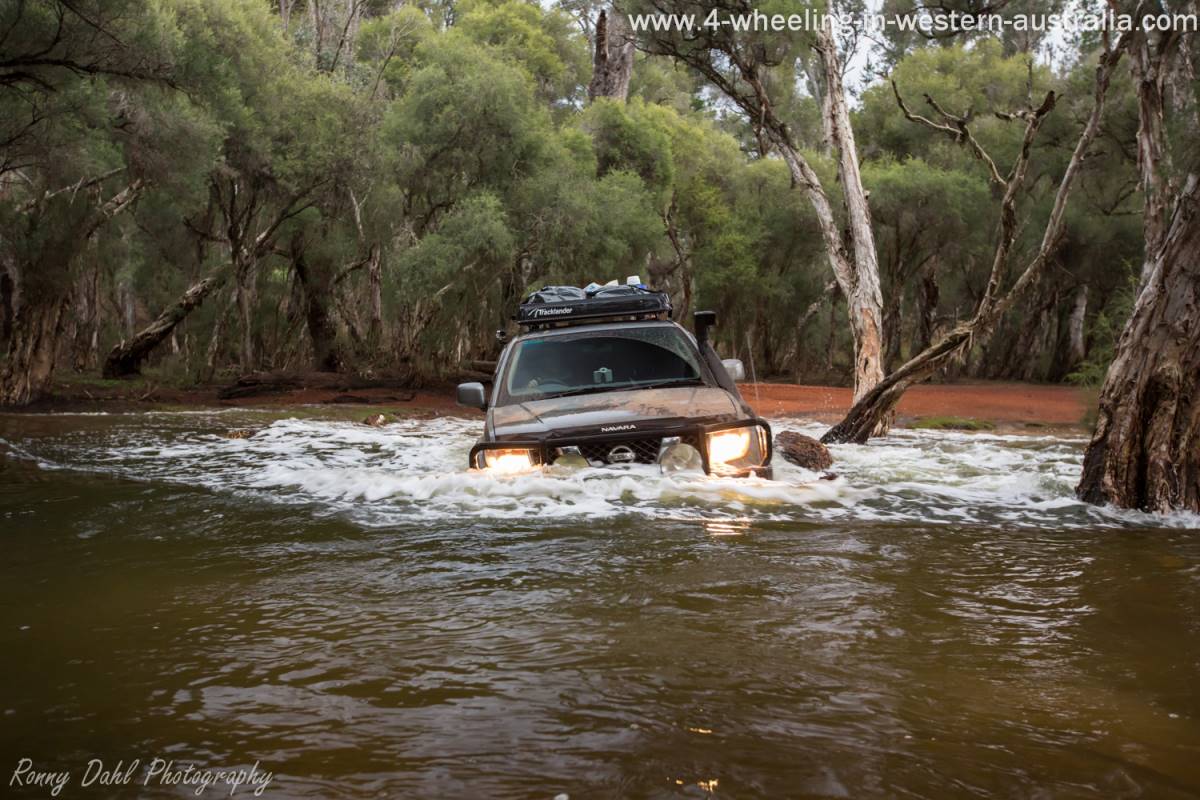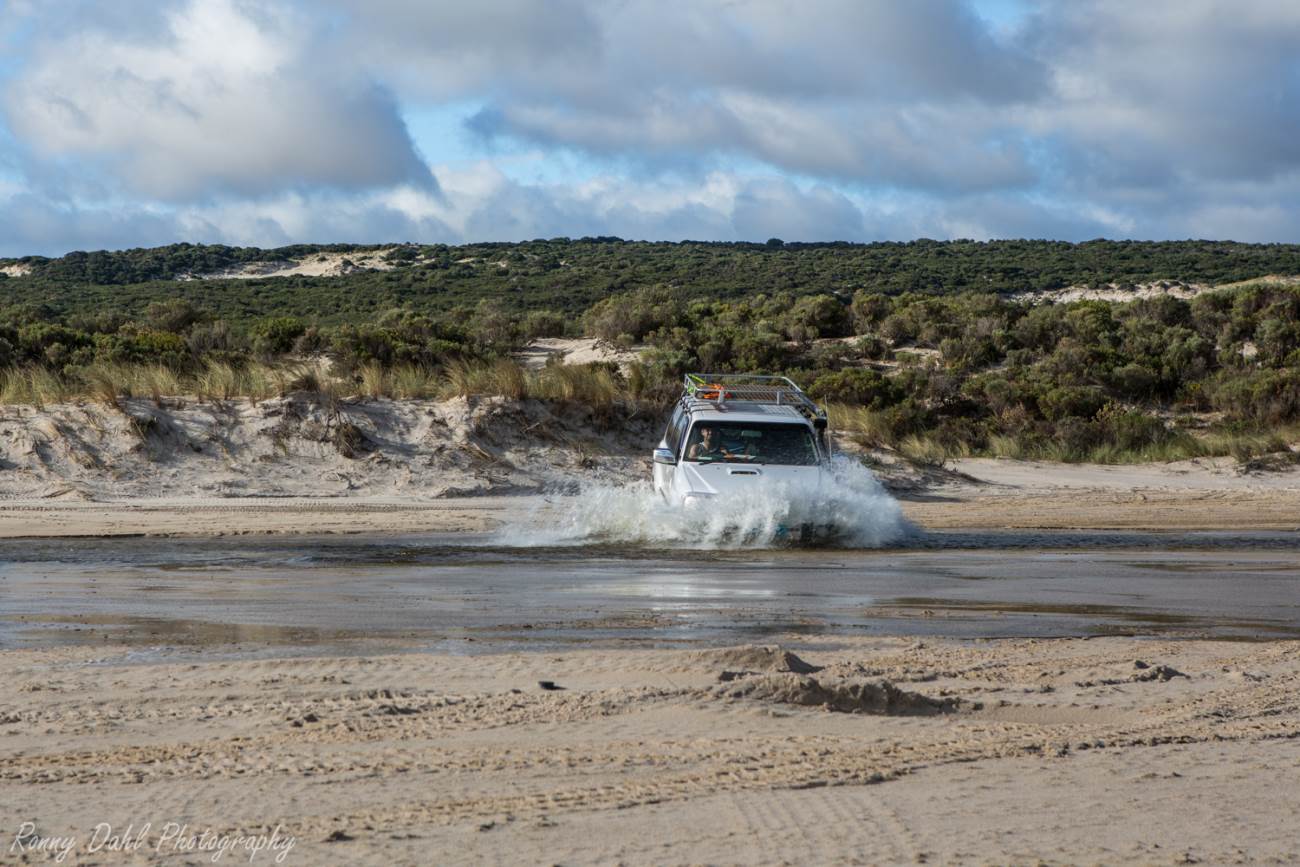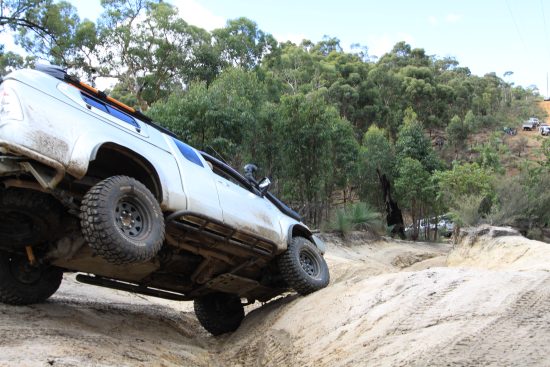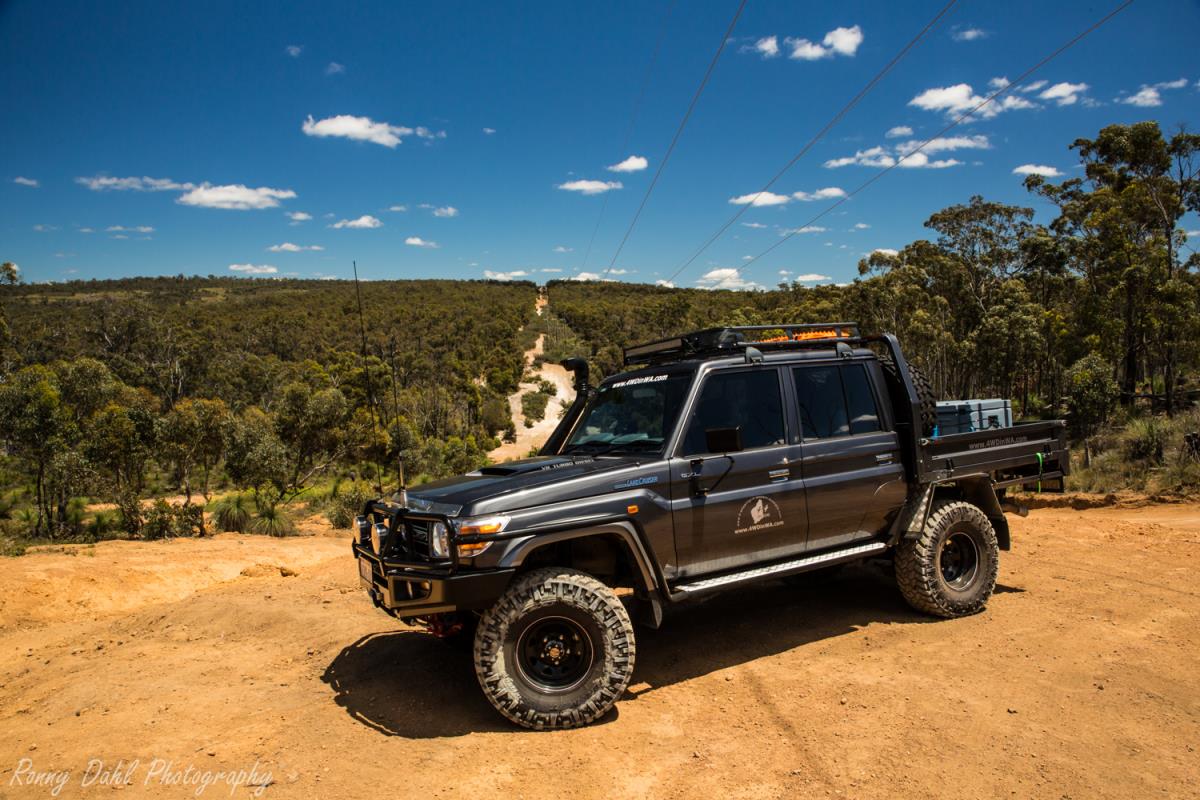
River Crossings.
Not too many people with 4wd's actually do river crossings that are deeper than knee height and for that reason the feeling of crossing a deepish river is just awesome as you get the sense of achievement, the thrill and knowing that not many others would have crossed in recent times.
Driving
through water lower than knee deep is just a deep puddle in the scheme of
rivers.
Required
for Water crossings.
There are some things that are a must have for water crossings, the first is a snorkel as it will raise the height of the air intake, protecting the engine from sucking in water.
Water in the engine will destroy it and stop the vehicle
in the river, leaving you stranded.
The second must have item are extended differential breathers.
When Driving off road both diffs will heat up expanding the air and oil inside the diffs, when a hot differential comes in contact with cold water it will condense the air and oil to a point that the pressure will force the diff to suck in air through the stock diff breathers which are normally just a short distance from the diff itself, meaning the breathers will more than likely be under water when crossing even a shallow river.
If the breather is under water it can't suck in air so it ends up sucking in water, water and oil don't mix in a very good way at all, this water will stay in the differential causing rust over time that will one day lead the a mechanical failure.
Think of snorkel and extended differential breathers as insurance, valuable
piece of mind.
Nissan Navara crossing Murray River. Western Australia.
Petrol
engines and River crossings.
Owning a petrol 4wd it would be very wise to spray the engine bay electrics with WD40 (water displacement lubricant) or any other water displacment products. This will help prevent any short outs/power failure while crossing a deep river.
A car bra is also recommended, they will help prevent water from entering the engine bay and will assist in creating a bow wave in front of the vehicle, reducing the water height if following behind the wave, when doing river crossings.
Diesel engines and river crossings.
Diesel engines are not affected by water as much as petrol engines due to the fact they don't have as many electrical components, which makes them more reliable when it comes river crossings.
If a diesel does somehow suck water into the engine it will fail and destroy
itself, all it takes is 30mm of water, so make sure your snorkel is water
tight.
What
to do before river crossings.
If you just drive straight through a river without checking it first there would be no way of knowing exactly how deep it is, what's under the water and what kind of traction there might be.
Always walk the crossing, if it can't be crossed on foot then it's too risky to cross in a 4x4 (if in crocodile infested waters northern W.A. it would be wise not to walk the crossing for obvious reasons, and if in doubt don't cross it).
The best way to walk a crossing is to first cross by foot where you intend to put you left wheel then on the way back walk where the intended right hand wheel path.
Check the depth, for obstacles and what kind of traction there
might be. If the current is raging or just too strong it could be too risky.
Look for previous tracks leading in and out of the crossing as they may
indicate problems or an easy way in and out. Traction can be the worst at the
exit as the banks are sometimes sudden and steep.
If travelling in convoy the last one to exit the bank will have the hardest challenge ahead as the previous companions may have carved it up, also every time another vehicle exits it will drag water up the bank causing less traction.
Rocky river crossings.
When shallow these are quite easy to navigate as most rocks (all the large ones) are visible. When between shallow and deep it's possible to pick a good line to drive however choose very carefully, if deep (waist high or deeper) I would recommend not too attempt at all, it's just too risky.
Pick the best line by wheel placement on the higher rocks to avoid getting hung
up or damaged and keep in mind the deeper holes between the rocks can be
surprisingly deep.
River crossing recovery.
If it’s a deep crossing prepare the recovery points for vehicle extraction if something should go wrong you don't want to get out looking for recovery gear and hooking it up whilst in waist deep water.
Recovering a 4wd from a river is best done fast, the longer it's in the water the more water the 4wd will take onboard.
If crossing first hook up the rear recovery points and have someone at the rear
ready with a snatch strap, if second to cross hook up the front and have the
lead driver ready standing by.
As you enter the water, upon contact at bumper height just back off a slightly
to allow the bow wave to get a head start (about half a meter) this will make
it slightly shallower in front of the 4wd, which will help minimise the amount
of water entering the engine bay.
When crossing choose 2nd or 3rd gear low, 1st gear is too slow and 4th gear is travelling too fast also 4th gear will increase the chance of stalling mid way. Try not to change gear while in the water, changing gears will increase the chance of water entering the gear box and clutch.
Salt lakes.
When they look dried up don't be fooled, under that dry crust can be an endless mud pit. We have driven across one before that was dry and had no problems, we even parked in the middle and took some photos.
Then 6 months later in a place that would have been drier to the previous area; we came across another salt lake. Thinking it would be even drier than the previous salt lake half a year ago we all took off one by one and about 80 meters in I was the first to sink, 2nd vehicle sank 25m behind me and the 3rd vehicle sank 20m behind the 2nd vehicle, long story short it was 2-3 hours of winching.
So if approaching a salt lake test it on foot even get a shovel out and have a dig, then test it with one vehicle around the edges first, always assume it’s worse further towards the center.
The key to driving across an actual salt lake is to keep the momentum up and try not to turn too sharply, turning will reduce the 4wd momentum. There should be tracks from previous travelers as those tracks can remain for a long time, these tracks should provide more traction and it would be wise to stick to them.
Some salt lakes are not that wide and some are huge either way stick to one gear and just keep that momentum going do not stop, if you have to return back due to conditions getting worse (salt lake getting too muddy further in) then take the widest turn possible and then head back.
If you should get stuck only use a winch if a companion is on the shore line or on an island with a hard surface.
If in the middle the only hope here is a snatch strap recovery or finding some logs and bushes to shove under you wheels. If you have some maxtrax well then you’re in luck, but expect to use them over and over again depending on the conditions.
Crossing the Warren River.
Recent Articles
-
4x4 off road tracks 0 to 250 km from Perth
Nov 21, 23 07:40 PM
On this page we cover 4x4 off road tracks within a 250 km radius from Perth... -
4 Wheeling Around Jurien Bay.
Nov 21, 23 07:35 PM
Jurien Bay 4x4 tracks info and general information about the area... -
Carnamah caravan Park WA
Oct 10, 23 09:31 PM
This caravan park is very clean. The ablutions are spotless. The washing machines are free but need to keep them clean. Easy parking for big rigs and if
- Home
- Terrain Conquering
- River Crossings
Leave River Crossings And Go To Home Page.
